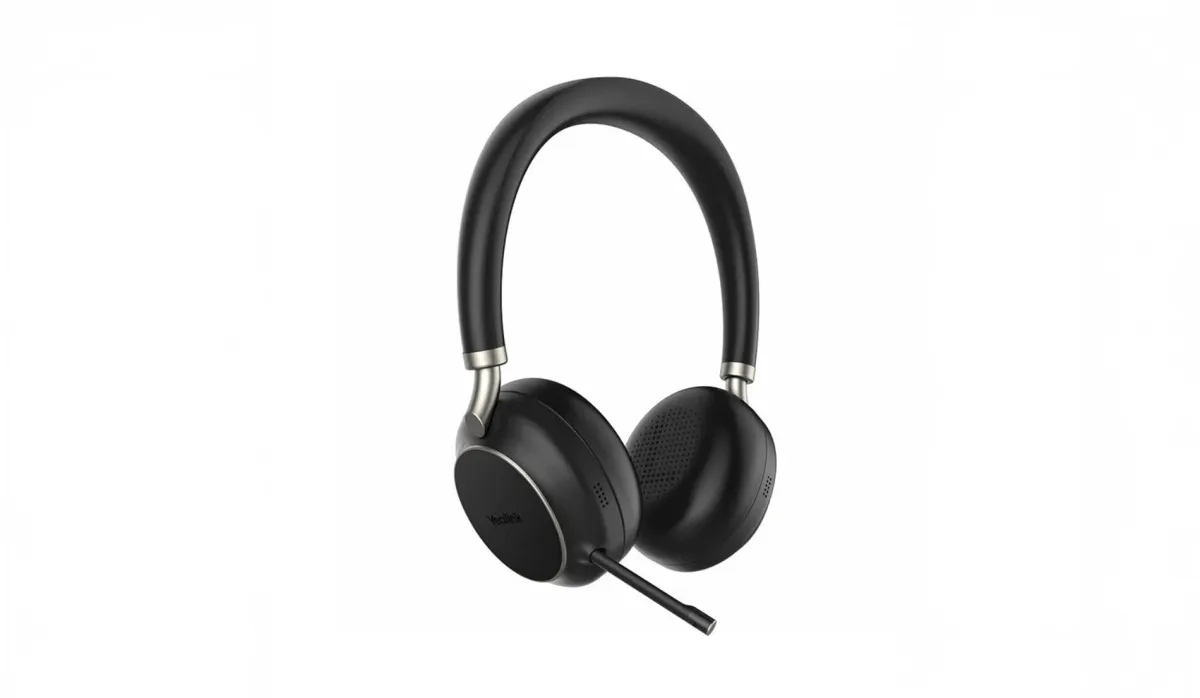<?xml version="1.0" encoding="utf-8"?>
<rss version="2.0">
<channel>
<title>Remote Jobs in Australia | Work From Home Opportunities 2024</title>
<link>https://www.remoteinaustralia.com</link>
<description>Find the best remote jobs in Australia. Browse verified work-from-home positions, remote work guides, and expert tips for landing your dream remote role in Australia.</description>
<lastBuildDate>Sat, 13 Dec 2025 09:24:38 GMT</lastBuildDate>
<docs>https://validator.w3.org/feed/docs/rss2.html</docs>
<generator>https://github.com/jpmonette/feed</generator>
<language>en</language>
<image>
<title>Remote Jobs in Australia | Work From Home Opportunities 2024</title>
<url>https://www.remoteinaustralia.com/images/logo-512.png</url>
<link>https://www.remoteinaustralia.com</link>
</image>
<copyright>All rights reserved 2024, RemoteInAustralia.com</copyright>
<category>Bitcoin News</category>
<item>
<title><![CDATA[Why CEOs Are Fighting Against WFH Legislation in Australia]]></title>
<link>https://www.remoteinaustralia.com/article/why-ceos-are-fighting-against-wfh-legislation-in-australia</link>
<guid>why-ceos-are-fighting-against-wfh-legislation-in-australia</guid>
<pubDate>Sat, 13 Dec 2025 05:00:23 GMT</pubDate>
<description><
### Key Concerns from Business Leaders
According to The Australian's annual CEO survey, top business leaders expressed reservations about the proposed legislation. **Ryan Stokes, CEO of SGH**, stated that remote work **"should not become an employee entitlement."** **Nick Hawkins, CEO of IAG**, highlighted that it might be **"difficult to cultivate culture remotely."** Similarly, **Andrew Irvine, CEO of NAB**, emphasized that building a **"strong, cohesive culture requires people to be together."**
### The Senate Inquiry and Greens' Plan
A Senate inquiry will be conducted on a WFH bill pushed by the Australian Greens. Under this plan, employers would be mandated to consider reasonable adjustments to accommodate WFH requests before rejecting them. However, **Robert Spurway, CEO of GrainCorp**, warned that government-mandated WFH requirements risk becoming **"too rigid,"** arguing that a **"one-size-fits-all approach doesn't reflect the diversity of Australia's workforce."**
### Hybrid Work in Australia
Hybrid work remains popular in the country, but a Robert Half poll revealed that **15% of employers plan to increase mandated in-office days** in the near future. Pushback on WFH stems from leaders' concerns about productivity, with **45% of employers** believing employees are more productive in the office full-time. Additionally, more than a third of employers cite improving communication (39%), strengthening company culture (37%), and enhancing in-person collaboration (35%) as key reasons for seeking full-time office attendance.
### Productivity Commission Findings
Despite these concerns, a recent Productivity Commission report concluded that **WFH has not contributed to the decline in Australia's productivity** since the pandemic. The report stated, **"There is no evidence to suggest that the trend towards hybrid working has contributed to the productivity loss phase of the productivity bubble."**]]></description>
<author>contact@remoteinaustralia.com (RemoteInAustralia.com)</author>
<category>wfh</category>
<category>ceos</category>
<category>australia</category>
<category>hybridwork</category>
<category>productivity</category>
<enclosure url="https://cdn-res.keymedia.com/cms/images/us/037/0365_639011151257364657.png" length="0" type="image/png"/>
</item>
<item>
<title><![CDATA[How Deel Builds a Thriving Global Culture with 7,000 Remote Employees Across 120 Countries]]></title>
<link>https://www.remoteinaustralia.com/article/how-deel-builds-a-thriving-global-culture-with-7-000-remote-employees-across-120-countries</link>
<guid>how-deel-builds-a-thriving-global-culture-with-7-000-remote-employees-across-120-countries</guid>
<pubDate>Fri, 12 Dec 2025 05:00:24 GMT</pubDate>
<description><
## Rethinking Onboarding for a Remote-First World
With **300 new hires onboarded weekly** across the globe, Deel has rebuilt onboarding from scratch. Culture begins from **day zero**, not day one, with new hires receiving e-learning modules, video content, and leadership messages that explain Deel’s origin story, mission, and values. Playful assets like an onboarding "joke playbook" help employees understand remote work realities by swapping office instructions with remote equivalents (e.g., "head to the Ask-IT Slack channel"). The goal is to generate excitement while clarifying how work gets done in a fully remote environment.
## Making Values Real in Hiring and Onboarding
For Deel, culture and values aren’t just posters on a wall—they’re intentionally woven into assessment and onboarding. Every candidate undergoes a **dedicated culture interview** focused on alignment with Deel’s values. These values are reinforced in onboarding through live sessions on the founding story and values, with leaders spotlighting how they apply in day-to-day decisions. This ensures consistency between recruitment promises and the employee experience.
A core value is **"together everywhere"**, which is emphasized in new-hire sessions where time is carved out for global peers to connect. Cohorts include people from all corners of the world sharing why they joined, celebrating the **truly global workforce**. To foster connection, Deel offers initiatives like a personal travel budget for employees to visit colleagues and "Deel dinners" funding in-person meetups in local hubs. At year-end, a global all-hands session features a **"work from anywhere" photo competition**, reinforcing flexibility and community.
## Rethinking Communication: Slack as “the Office”
With employees across countless time zones, Deel fully embraces **asynchronous working models**. Slack is treated as "the office," where most work, collaboration, and feedback happen. Voice notes, written updates, and frequent huddles replace traditional meetings, enabling quick issue resolution without waiting for calendar slots. This approach prioritizes speed, clarity, and progress over conventional best practices like face-to-face feedback.
To avoid silos in a remote business, Deel recently appointed its first **internal communications manager**, sharpening company-wide and product all-hands sessions. Clear, intentional communication is key to experiencing culture in a remote-first organization.
## Flexibility as an Inclusion Strategy
Remote work at global scale creates a 24-hour operating environment, but Deel ensures flexibility doesn’t mean 24-hour workdays. The focus is on **output and impact, not presence**. Flexible hours are framed as an inclusion issue, supporting working parents and those with caring responsibilities by allowing them to design their day. Performance is judged on delivery and outcomes, making policies that respect life commitments a **significant differentiator** in the global talent market.
## The Next Frontier of Global Culture
Deel acknowledges it’s still on the journey, with hypergrowth and evolving internal communications. The emerging blueprint involves designing every stage of the employee journey for remote-first, global realities. The **"together everywhere" philosophy** helps maintain culture, engagement, and flexibility across a global, remote workforce, building something genuinely different rather than recreating the office online.]]></description>
<author>contact@remoteinaustralia.com (RemoteInAustralia.com)</author>
<category>deel</category>
<category>remoteculture</category>
<category>globalteams</category>
<category>onboarding</category>
<category>flexibility</category>
<enclosure url="https://cdn-res.keymedia.com/cms/images/us/037/0391_639010905212669944.png" length="0" type="image/png"/>
</item>
<item>
<title><![CDATA[Teens in Remote Australia Fear Social Media Ban Will Deepen Their Isolation]]></title>
<link>https://www.remoteinaustralia.com/article/teens-in-remote-australia-fear-social-media-ban-will-deepen-their-isolation</link>
<guid>teens-in-remote-australia-fear-social-media-ban-will-deepen-their-isolation</guid>
<pubDate>Tue, 09 Dec 2025 05:00:22 GMT</pubDate>
<description><![CDATA[As Australia's social media ban for children under 16 approaches, teenagers in remote and rural communities are voicing concerns about increased isolation and loss of vital connections.
From December 10, popular platforms like **Snapchat, Facebook, Instagram, YouTube, TikTok, Reddit, Kick, X, and Twitch** will be off-limits to kids under 16. For those in areas where peers are scarce, this ban threatens to make socializing even more challenging.
### Remote Teens Speak Out
Frankie Andrews, a 13-year-old state swimming champion from Swifts Creek in Victoria's High Country, acknowledges the ban's intent but worries about practical impacts. "I think [the ban] is a good idea... but maybe the age should be a bit lower," she says. "It's going to be bad not being able to contact friends as easily."
Frankie predicts resistance: "I reckon there'll be a lot of people arguing against it... but people are going to find their way around it eventually."
### Maintaining Family and Creative Bonds
Sabrina Glibanovic, 13, from Yallourn in Gippsland, uses social media to stay connected with her mother's family in Vietnam and find inspiration for her artwork. "I don't think they fully understand how we use it and how young people use it to connect with the world," she says.
Sabrina relies on **Pinterest, Instagram, and TikTok** for artistic inspiration: "I just struggle a bit with creativity... they like having the inspiration there, so they can have ideas help them fuel their mind."

*Sabrina Glibanovic (back left) uses social media to speak with her family in Vietnam. (Supplied: Sabrina Glibanovic)*
### The Isolation Impact
With school holidays approaching, Sabrina fears the ban will cut off her social lifeline. "It's going to cut off all my contact with my family from Vietnam," she says. "I won't be able to communicate as well with my friends and have that connection through like videos and things."
She also highlights the **educational value** of social media: "On social media you can learn a lot about how the world works and other worldly problems... I feel like it's a more fun way of learning than just actually researching."
### Doubts About Effectiveness
The federal government is requiring social media companies to enforce the ban using methods like ID uploads, AI facial scanning, and usage analysis. However, La Trobe University professor Daswin De Silva questions its practicality.
"One thing that's clear is that this ban has made kids more innovative and creative thinking outside the box," he says. "There's been many different methods shared on social platform using a $20 Halloween mask to bypass the facial recognition or a lot of kids moving to new apps that aren't in the ban."

*Daswin De Silva says the social media ban is unlikely to stop kids. (Supplied: La Trobe University)*
Professor De Silva warns of a **"whack-a-mole" approach**, where children simply migrate to new platforms as existing ones are restricted.]]></description>
<author>contact@remoteinaustralia.com (RemoteInAustralia.com)</author>
<category>socialmedia</category>
<category>isolation</category>
<category>youth</category>
<category>remotework</category>
<category>australia</category>
<enclosure url="https://live-production.wcms.abc-cdn.net.au/3ea04d4ad7770850c00b3268f7ddd2a0?impolicy=wcms_watermark_news&cropH=900&cropW=1600&xPos=0&yPos=297&width=862&height=485&imformat=generic" length="0" type="image//3ea04d4ad7770850c00b3268f7ddd2a0"/>
</item>
<item>
<title><![CDATA[How Yealink's Retail Expansion is Revolutionizing Hybrid Work Communication in Australia]]></title>
<link>https://www.remoteinaustralia.com/article/how-yealinks-retail-expansion-is-revolutionizing-hybrid-work-communication-in-australia</link>
<guid>how-yealinks-retail-expansion-is-revolutionizing-hybrid-work-communication-in-australia</guid>
<pubDate>Mon, 08 Dec 2025 05:00:25 GMT</pubDate>
<description><
## Hybrid Habits: The New Normal
Chen emphasizes that **hybrid work patterns** in Australia continue to influence product design and distribution. "It's hybrid working two to three days in the office, and two days at home. Hybrid working is not a temporary solution. It's already here," he states.
Headsets have shifted from optional to essential. "Before the pandemic, a headset was a nice-to-have. What I am seeing today is it's already becoming the new norm. It's **essential for work communication**," Chen explains. Professional audio is increasingly important because workers take calls from varied environments. "If you're still wearing earbuds with a weak microphone, all the people talking around you mean the other side can't hear clearly. It doesn't sound good or professional in your daily work," he adds.
## Product Design: Innovation for Modern Work
A key feature in Yealink's latest models is a **retractable microphone boom arm**. "We call it a hidden retractable microphone design. When you're walking on the street, you can wear it like a fashionable headphone, but when you have a meeting, you just slightly pull it out. The mic automatically unmutes," says Chen.
**Noise-cancellation** remains the company's primary innovation. During product demos, Chen often uses a hairdryer to demonstrate suppression performance. "I turn it on and keep talking. I always ask, can you hear any noise from my side? They're always surprised to see how powerful it is," he adds.
The company is now applying **machine learning** to further refine this. "We are using AI technology to improve the noise cancelling. With the help of AI, it can detect the noise more clearly, capture and eliminate it more efficiently," Chen explains.
Yealink's naming conventions are designed to simplify the range. "If you see anything starting with BH, that means Bluetooth headset. If you see anything with UH, that's USB wired headset. It's trying to make things easier for customers to remember us," he says.
Comfort also remains a priority. "For headsets, you really need to get them in your hand, play with it, and find the design you like. You can only touch and feel good quality ear cushions to see how light and comfortable it is," Chen adds.

## Strategy and Innovation: Building on Enterprise Expertise
Chen notes that Yealink's consumer push builds on the company's history in enterprise communication. "Yealink is not that popular for consumers right now, but we have built our reputation based on **reliability and quality for business**. It's about bringing enterprise-grade technology to the daily consumer," he says.
He highlights Yealink's heavy investment in engineering. "We have more than 3000 employees, but more than 50% are from R&D backgrounds. Even the management team: we have seven people and half are from R&D. We invest more than 10% of our revenue into R&D every year," Chen explains.
**Brand awareness** is the next challenge. "We are lacking brand awareness on the consumer side. Officeworks is helping us. Through the retail channel, it's helpful for making it more accessible for the consumer to understand what Yealink can provide," he adds.
Australia is the first market to receive Yealink's new retail strategy. "Australia is the first market for us to launch with retail. Within the success we build, it will be the blueprint for Yealink's global market. It's a big milestone for us," Chen states.

## What Comes Next: Expanding the Vision
Chen reveals that the company plans to broaden its consumer product line. "It's just the start. We are doing lots of new innovation. We are developing **open-wearing headsets**, like sports headsets, but with a small microphone. When you are listening to music or running you can wear it like a consumer sports headset, but when you have a phone call, you can put the microphone here and make it a professional headset," he says.
He emphasizes Yealink's consistent vision across product categories. "Yealink's vision is helping people communicate and collaborate more easily and more efficiently, no matter where and how they work," Chen concludes.
"Hybrid working is not a temporary solution. It's already there," he reiterates.]]></description>
<author>contact@remoteinaustralia.com (RemoteInAustralia.com)</author>
<category>yealink</category>
<category>officeworks</category>
<category>headsets</category>
<category>hybridwork</category>
<category>australia</category>
<enclosure url="https://ecommercenews.com.au/uploads/story/2025/12/01/compatible_yealink_pic.jpg" length="0" type="image/jpg"/>
</item>
<item>
<title><![CDATA[How Hybrid Work Boosts Mental Health: Surprising Gender Differences Revealed in Australian Study]]></title>
<link>https://www.remoteinaustralia.com/article/how-hybrid-work-boosts-mental-health-surprising-gender-differences-revealed-in-australian-study</link>
<guid>how-hybrid-work-boosts-mental-health-surprising-gender-differences-revealed-in-australian-study</guid>
<pubDate>Fri, 05 Dec 2025 05:00:23 GMT</pubDate>
<description><
*The mental health of Australian men was not significantly impacted by working from home, but their wellbeing improved by not having to travel to a workplace.*
## Gender Differences in Remote Work Benefits
**Australian women** with existing mental health issues experienced the **most benefits** when combining 50-75% of their hours working from home with a "partial office/on-site presence." According to researcher Jan Kabatek, "The biggest gains for women were found for work from home arrangements which involved the majority of days spent at home, but retaining at least one or two days of work from the office or on-site."
For **Australian men**, while mental health wasn't significantly impacted by remote work, their wellbeing improved through **reduced daily commuting times**. The HILDA Survey showed Australia's average daily commute dropped from 61 minutes in 2019 to 52 minutes in 2023.
## The Power of Hybrid Work Arrangements
"The most important finding of the study is that of hybrid work," emphasized Kabatek. "You are retaining the connection to the firm and to your colleagues, you can talk in person, and you are retaining those social ties, but you also have this work-from-home aspect that is strong enough to make a difference."

*Australian HR Institute CEO Sarah McCann-Bartlett says workers still prefer to work up to two days from home per week.*
Sarah McCann-Bartlett, CEO of the Australian HR Institute, confirmed similar findings from her organization's research: "Over 40% said that they felt that hybrid working provided enhanced health and wellbeing benefits for employees. Both of those things have supported higher employee retention for employers and enhanced their ability to attract new candidates."
## Current Remote Work Trends in Australia
Before 2019, about **one in four Australians** worked some hours from home. This increased to **38% during the pandemic**, with more than one in three workers doing some remote work in 2023. The increase was most prevalent in capital cities.
In 2023:
- 65% of Australian workers did not work any hours from home
- 27% worked at least one full day at home
- Workers prefer 2-3 days per week from home in 2025
## The Future of Remote Work in Australia
Kabatek noted that Australian workers continue pushing for flexible arrangements: "The fact that we are not seeing reversal in terms of people going back to the office reflects that there is a demand for these types of work arrangements."
He also emphasized: "I have not seen any credible evidence to suggest that working from home negatively impacts employees' productivity or the profitability of workplaces."
McCann-Bartlett added that **70% of employers** surveyed don't expect changes to hybrid working conditions for at least two years, with many reporting that "hybrid working has supported productivity growth in their organizations."
With Australia's tight labor market, employers offering flexibility are in a better position to attract and retain talent, as employees highly value these arrangements.]]></description>
<author>contact@remoteinaustralia.com (RemoteInAustralia.com)</author>
<category>mentalhealth</category>
<category>hybridwork</category>
<category>remotework</category>
<category>australia</category>
<category>wellbeing</category>
<enclosure url="https://live-production.wcms.abc-cdn.net.au/77f8f82668781712c2660cdb8c58472a?impolicy=wcms_watermark_news&cropH=2492&cropW=4430&xPos=473&yPos=673&width=862&height=485&imformat=generic" length="0" type="image//77f8f82668781712c2660cdb8c58472a"/>
</item>
</channel>
</rss>